The Echeveria colorata is a gorgeous succulent with rosettes of pale green lance-shaped leaves with a pinky red tinge on their tips and outer edge. This plant is an exquisite addition to your rock garden or you could even grow it indoors and enjoy its beautiful yellow or pink flowers from the comfort of your own home.
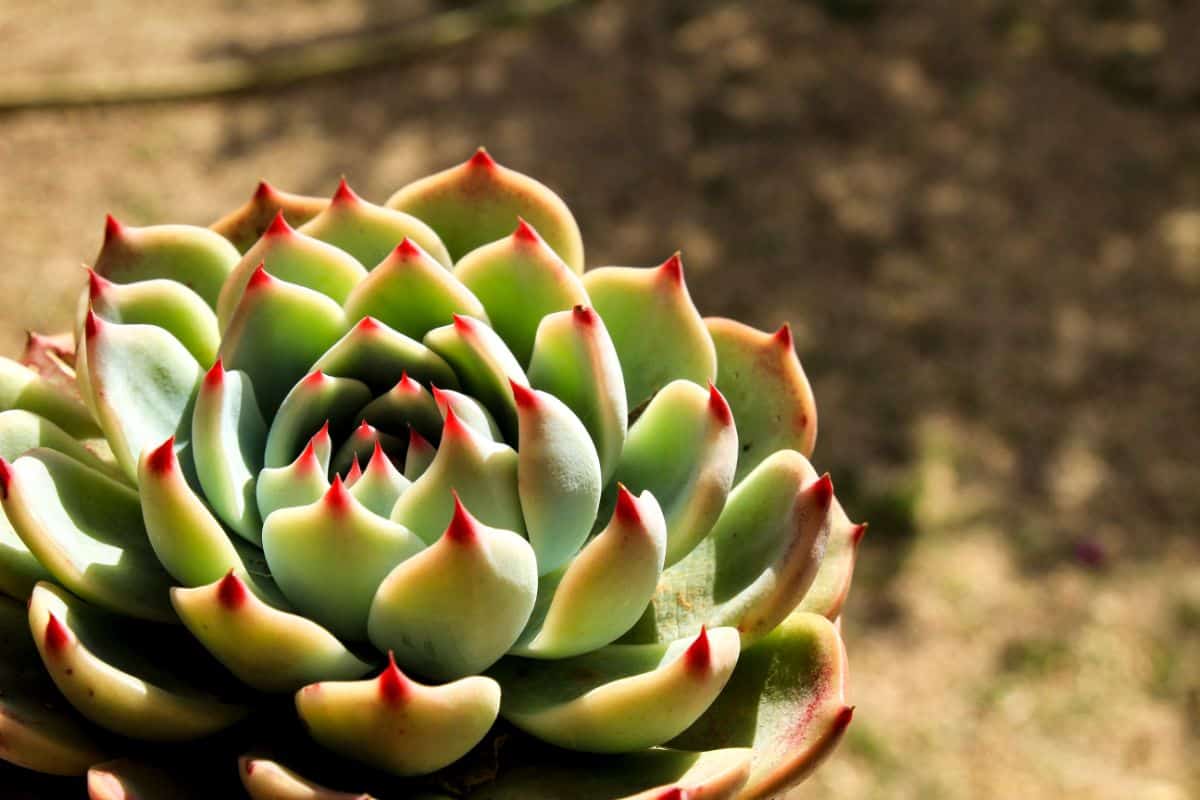
As with most succulents, it is fairly easy to grow given the right conditions so this article will go through all the information you need to know to enable it to flourish for you.
Jump to:
Description
| Name: | Echeveria Colorata |
| Soil: | Well-drained soil |
| Blooming: | Late winter and early spring |
| Light: | Full sun to partial shade |
| Water: | When the soil is completely dry |
| Propagation: | Cuttings, leaves and seeds |
The Echeveria colorata is a slow-growing clumping succulent that produces many offsets in the form of clumping mounds. It can grow up to 40 centimeters in diameter, once mature, with a height of about 20 centimeters. It forms as a rosette of lance-shaped juicy leaves and is a really good plant for a fledgling gardener to grow.
Originating from Mexico, this succulent is used to sunny climates and does not require rich soil so you can plant it in areas of your garden that have a lot of light and sandier soil.
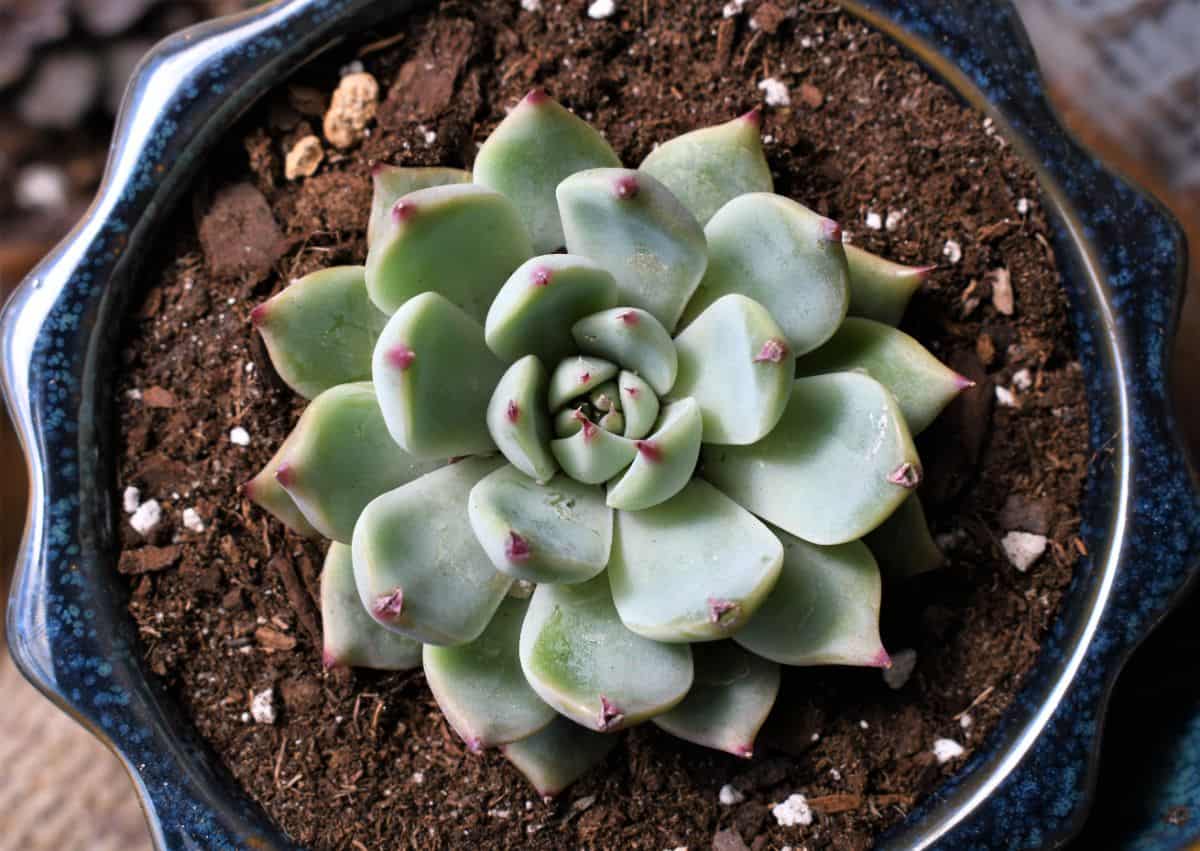
Buy it from:
Cultivars and Hybrids
There are 150 recognized species of the Echeverias and many have been crossed to create new hybrids. The Echeveria colorata too has a number of hybrids such as Echeveria ‘Beatrice’, Echeveria ‘Frank Reinelt’, Echeveria ‘Laulindsa’, Echeveria ‘Margaret Martin’, and x Graptoveria ‘Opalina’. Its cultivars are Echeveria colorata ‘Haage’ and Echeveria colorata ‘Mexican Giant’.
Care
These beautiful succulents are fairly easy to care for as long as you avoid exposing them to extreme temperatures. Their lower leaves can be removed easily if they start to discolor but be careful, as discolored leaves can be a sign that your plant is being over or under watered. Suitable for indoors or outdoors, just follow the instructions below to enable your plant to flourish and give you many years of pleasure.
Light
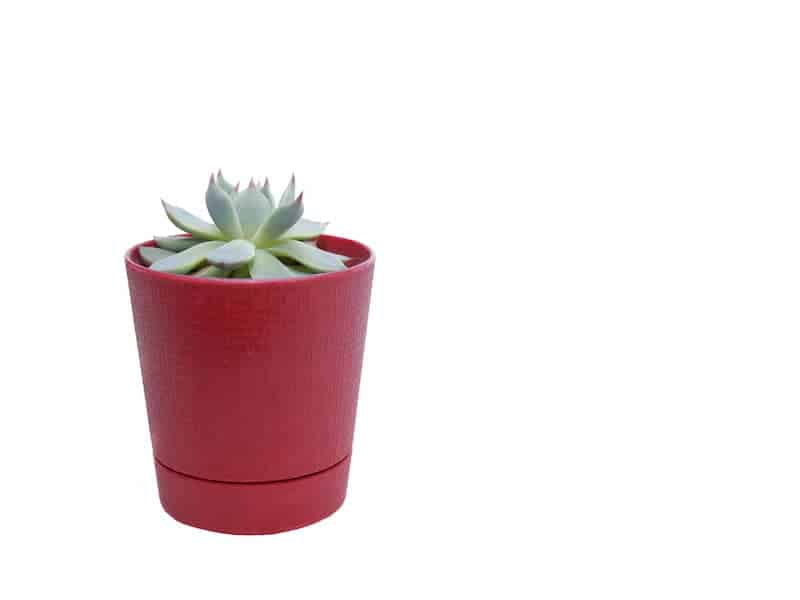
If you plant your Echeveria colorata outdoors, try to make sure that it is in a place where it will get at least 6 hours of sunlight a day. If you have it indoors, place it next to a window that gets a good deal of sunlight but will not cause it to get too hot.
No products found.
Water
As with all succulents, you need to make sure that you do not overwater your plant. Succulents like to have their soil soaked thoroughly but must be allowed to dry out completely before you water them again otherwise they will start to suffer and even die. This is called the soak and dry method.
Temperature
If you live in an area that gets below 20 degrees Fahrenheit, you will need to grow your Echeveria colorata indoors rather than outdoors. This is a succulent that loves the sun but is quite cold intolerant so that needs to be considered when you purchase one. It also does not like extreme heat so if you live in a country where the temperatures get very high, make sure the plant has some partial shade for at least some of the day.
Soil
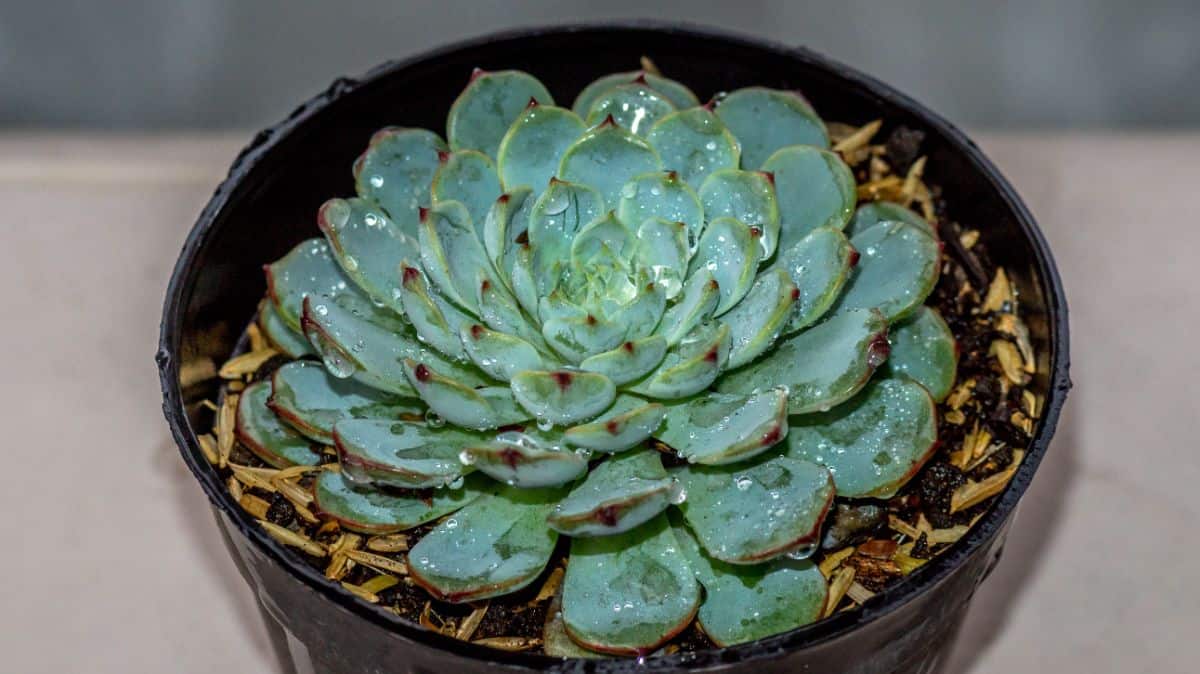
Like all succulents, the Echeveria colorata likes well-drained soil. If you consider that its natural habitat is growing on rocky hills in Mexico, you will appreciate that less is more when it comes to soil and this plant. A good sandy mix of soil to enable good drainage can be created by mixing soil with coarse sand or you can buy special succulent soil.
Propagation
It will take a year or two to grow this succulent from a seed to a flowering plant but you can speed this up if you propagate from a leaf:
- Use healthy leaves that have no damage
- Remove the leaf from the rosette by holding it between your thumb and forefinger and gently twisting. Then allow the cut area to form a callus
- Once the callus has formed, dip it in rooting hormone (optional) and place it in a shallow mixture of soil that will drain well
- Mist the leaves every few days and keep the soil moist
- Keep out of direct sunlight
- Your new plant may need some support until its roots are formed so prop it up with something soft that will not damage it or you could even lay it flat
- Once it has developed roots, water twice a month allowing the plant to completely dry out in between
Seeds
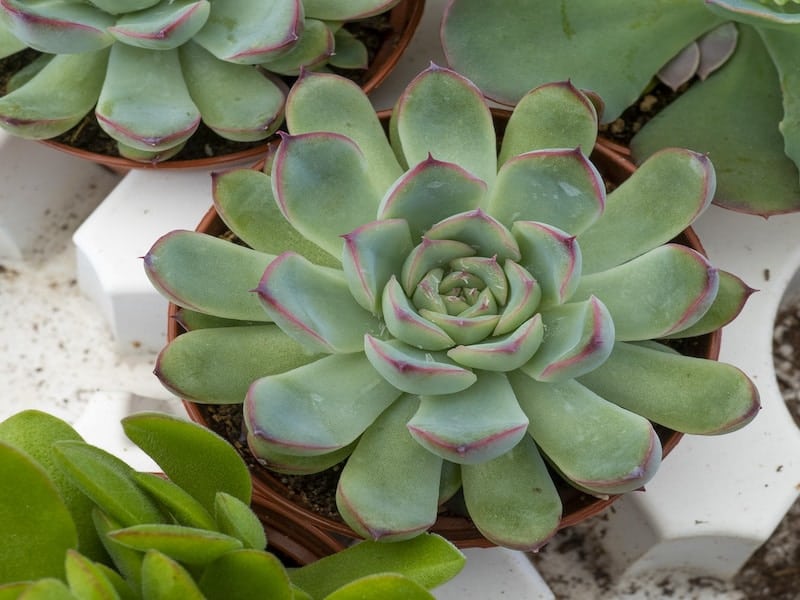
You can grow this plant from seed but as stated earlier, it will take a few years to mature enough for flowers so you might not want to wait this long. Planting from a leaf, your succulent will be able to flower much more quickly so this is a very good option for an impatient gardener.
You can harvest seeds from the flowers:
- Make sure you use fresh seeds as old seeds will not germinate
- Place one seed per seedling pot, then place in a tray of water to help the seeds to start germinating
- Do not place in direct sunlight
- Make sure the temperature remains below 65 degrees Fahrenheit or the seeds will not germinate
- Cover with a sheet of plastic to keep the soil moist
- After 3 weeks when you see little leaves start to form
- Remove the plastic to let your little plants have access to fresh air
- Once they have started to grow larger and outgrow their baby pots, replant in larger containers and eventually plant outside, if you like, when the plant has formed properly
Cuttings
As with most succulents, you can propagate other plants using a leaf cut from a mature plant. As explained before, this is a really easy way to create new plants to either place in other areas of the garden or give as gorgeous gifts to your friends.
Offsets
The Echeveria colorata does produce offsets in little clumps. These can be removed from the parent plant and will then form new separate succulents. Allow the area where the offset has been separated from the parent to callus before planting. Make sure you keep the offsets in moist soil and out of direct sunlight until they are well established.
Common Pests and Problems
This beautiful succulent can suffer from fungus so make sure you are vigilant to any changes in the leaf color. The good thing is that this condition can be easily treated with a fungicide. Other problems can be over or under-watering. Again, pay attention to the leaves as discoloration is a sign of poor health in succulents. The best way to ensure your plant’s health is to use the soak and dry method as explained earlier on.
This delightful little succulent is sure to bring you much joy with its pretty tinged juicy leaves and vibrant flowers. Ideal for a rock garden or as a houseplant, the Echeveria colorata continues to enjoy massive popularity amongst gardeners and has also become a trendy addition to the modern indoor ambiance.
Sources:
https://www.agriculture.gov.au/import/arrival/pests/plant_diseases
https://ucanr.edu/blogs/blogcore/postdetail.cfm?postnum=13488


